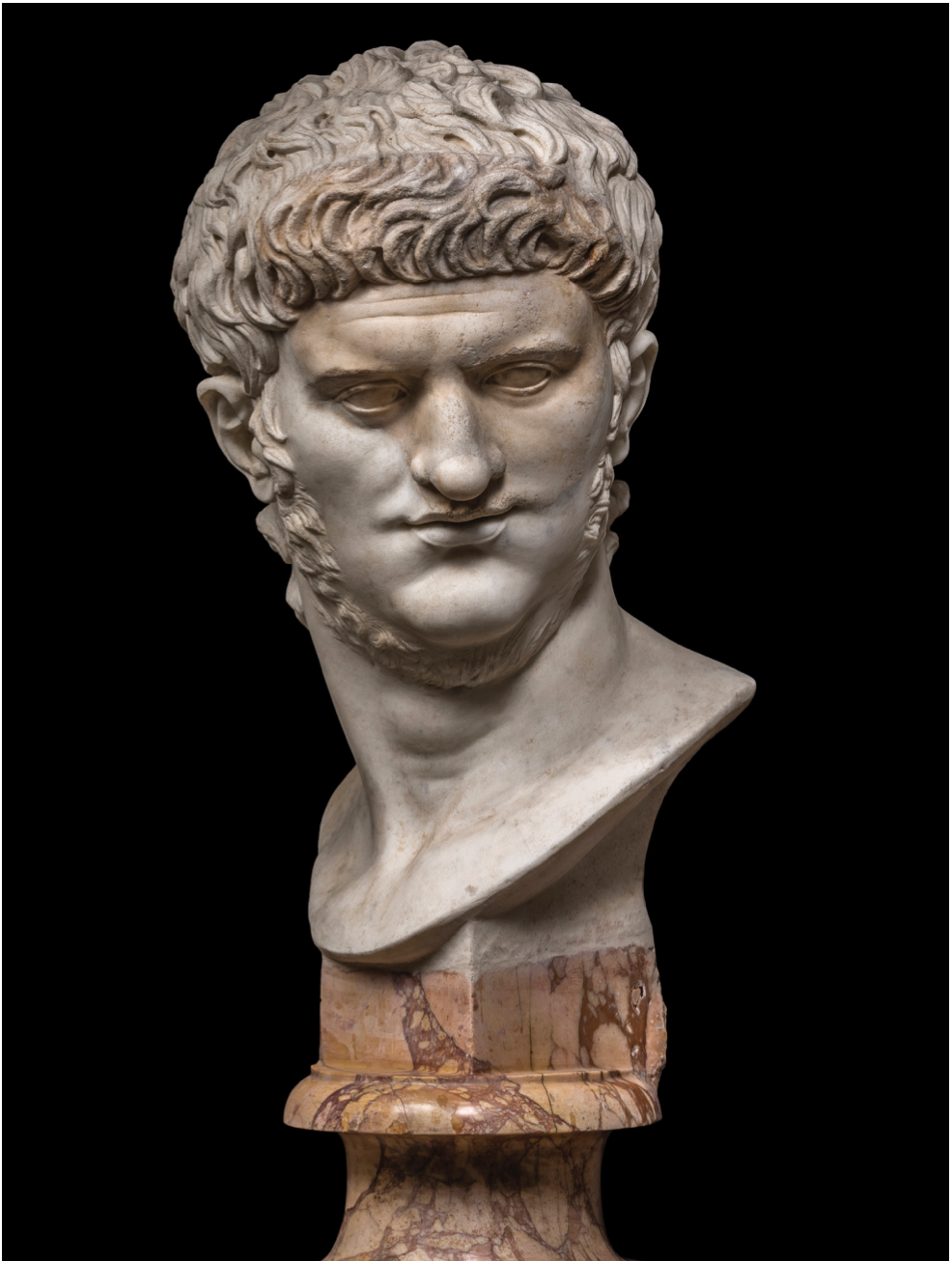Absolving Nero
The man behind the myth

Nero: the man behind the myth
★★★★
- What: Museum exhibit
- When: Till 24th October 2021
- Cost: £20 (students £18)
Just as how Ancient Greece shaped Roman civilisation — the Roman Empire has undeniably shaped the Judaeo-Christian western world that we have come to inhabit. And consequently; these empires, their rulers, their philosophers, and various other aspects of Greco-Roman life have been (in the context of history) disproportionately appropriated into modern culture. None have suffered more under this renewed spotlight than the Roman emperors of the Julio-Claudian dynasty, from Caligula to well - Nero!
Starting with the historians of antiquity (Tacitus, Suetonius, and Cassius Dio) to the playwright currently sitting in MR5 in the union building seeking inspiration, the story of Nero like Caligula and Caesar before him, has been treated with scant regard for objectivity and historical accuracy. And centuries later — he remains one of the most infamous characters of the Roman empire forever associated with the myth of playing a fiddle while Rome burned.
The British Museum, drawing on an impressive repertoire of over 200 artefacts (most from first century CE), in its latest exhibition “Nero: Man Behind the Myth” seeks to dispel mistruths surrounding the popular persona, and give an objective view of his reign.
Nero, the adopted son of Emperor Claudius and the great great-grandson of Emperor Augustus, had a short (14 year) but nonetheless eventful reign. Becoming Emperor at the mere age of 16, his period saw Queen Boudica’s rebellion in Britain, wars with the Parthian empire over Armenia, the great fire of Rome in 64 CE, and as with every other Roman emperor before him — court politics that usually ends in death — either by assassinations or suicide (in this instance of his mother, two of his wives and eventually his own at the age of 30).
The exhibition does great justice to each phase in his life. As a young ruler in the early years of his reign, Nero was very much still under the influence of his mother - Agrippina. This is beautifully captured in a series of roman coins from various stages of his reign — whose faces initially show both Nero and Agrippina prominently and on equal footing — only for the latter to slowly recede in subsequent mints — until eventually being absent in the coinage from the final years of his reign.
The detour into exploring Roman Britain and the revolt of the Iceni Tribe is exposited particularly well; Although, this seems indulgent in contrast to the modest exploration of what is arguably the most defining aspect of Nero’s reign — successfully establishing diplomatic relations with the Parthian empire.
In each instance by carefully exploring the contextual undercurrents of the antiquities, the exhibition explores the growing friction between Roman elites and Nero during his reign. His love for the arts, chariot races and in particular his participation in performances broke with tradition. Likewise, his decision to pursue the construction of an extravagant new palace in Rome on public land recently ravaged by the Great Fire - drew ire from both elites and the general populace.
... the exhibition highlights the growing inconsistency in the story of his myth ... and presents a different tale - one of a misunderstood and relatable emperor.
Through this process — the exhibition highlights the growing inconsistency in the story of his myth (that of an evil tyrannical ruler) and presents a different tale — one of a misunderstood and relatable emperor.
The exhibition poetically ends with a bust of his successor (Vespasian) that was reworked from an earlier bust of Nero, courtesy of ‘damnatio memoriae’ (Rome’s official policy of suppression of his memory); The bust a literal embodiment of the saying — history is writ by the victors. Ultimately the exhibition is a successful effort to humanise the persona that has been repeated vilified!

The exhibition however is not without its faults. Leading questions are often the last thing one would expect to see in museum labels — however that is precisely what the exhibition does in a couple of instances. The museums approach to present separate short summary labels and questions along with the exhibits to engage with the younger audience has only led to labels carrying leading questions that are heavily diluted of any contextualisation (in abject irony to what the rest of the exhibition achieves). But this triviality notwithstanding — the exhibition offers a praiseworthy dissection of Nero’s final years — true to form and stripped of any perfunctory.
History has shown repeatedly that there is always a penchant for inflated myths and personas! Britain, or rather the British empire in the waning centuries of the second millennium assumed the mantle of being a modern successor to Rome, one that has since been passed on to the USA. Modern Britain however seems reluctant to let go of the mantle — or so it would seem, considering recent events — from the Pax Brittanica episode to the wind rush scandal. While this exhibition makes it clear that Nero did not play the fiddle while Rome burnt — our leaders in the spirit of honouring his myth have so far... well… ordered £27K of takeout and pursued photo ops with immigration control while COVID-19 ravaged us. One can only hope that British museums’ latest exhibition attempting to dispel the myth of Nero dissuades our leaders from emulating the myth of him! But for the rest of us gentry - this latest exhibition exploring the final years of the Julio-Claudian dynasty through Nero’s eyes is a walk through history, rich with beautiful frescos from Pompeii and slave chains from Wales, that is not to be missed!
Note: The exhibition features human remains and is co-supported by BP.








